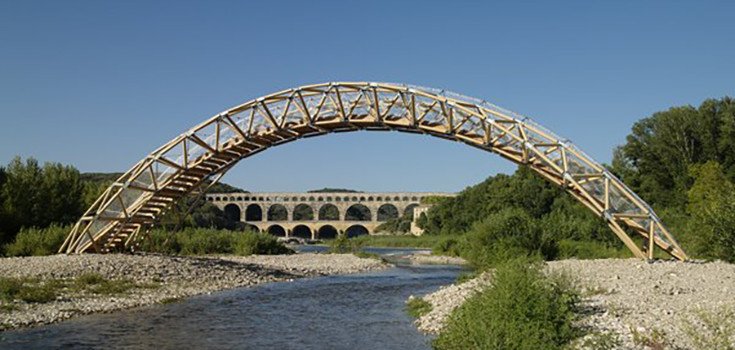Architect Uses Cardboard to Build Usable Bridges, Pavilions, and Emergency Housing

At first glance, you would never imagine that Japanese architect, Shigeru Ban’s bridge over the Gardon River in Southern France was made of cardboard tubes. Its design is simple, though elegant, and the bridge can soundly hold twelve people at one time. This isn’t Ban’s only claim to fame, though. The architect also takes the homeless man’s cardboard box to a new level with his emergency housing design.

Utilizing cardboard spools used in the shipping of carpets, cloth, and other items, the architect realized that they were strong enough for temporary housing for survivors of the earthquakes in Turkey (2000), Bhuj, India (2001), and Haiti (2010). Using these spools, bamboo sheeting, and rock foundations, Ban was able to erect structures in hours to house those who would otherwise be without an abode.
Read: 26 Ways to be More Green
Ban has built projects ranging from bridges and exhibition pavilions to emergency housing shelters with something that would normally be tossed aside and placed in landfills, but he doesn’t call himself ‘an environmental architect’ as his peers have dubbed him. He once said, “I just don’t want to waste any material. It’s as simple as that.”

Though Ban’s portfolio also showcases more permanent shelters of a much wider scope, his thoughtfulness of using recyclable and renewable materials is a new trend in architectural design. The World Architecture Festival features one finalist and an entire skyscraper made of sustainably-grown bamboo. And Al Johnson’s Swedish Restaurant and Butik has a green roof where cows can still graze.

With imagination like this, we could reform the entire planet, giving it an artistic and sustainable theme that takes trash to treasure, and gives prominence to green living like never before.
